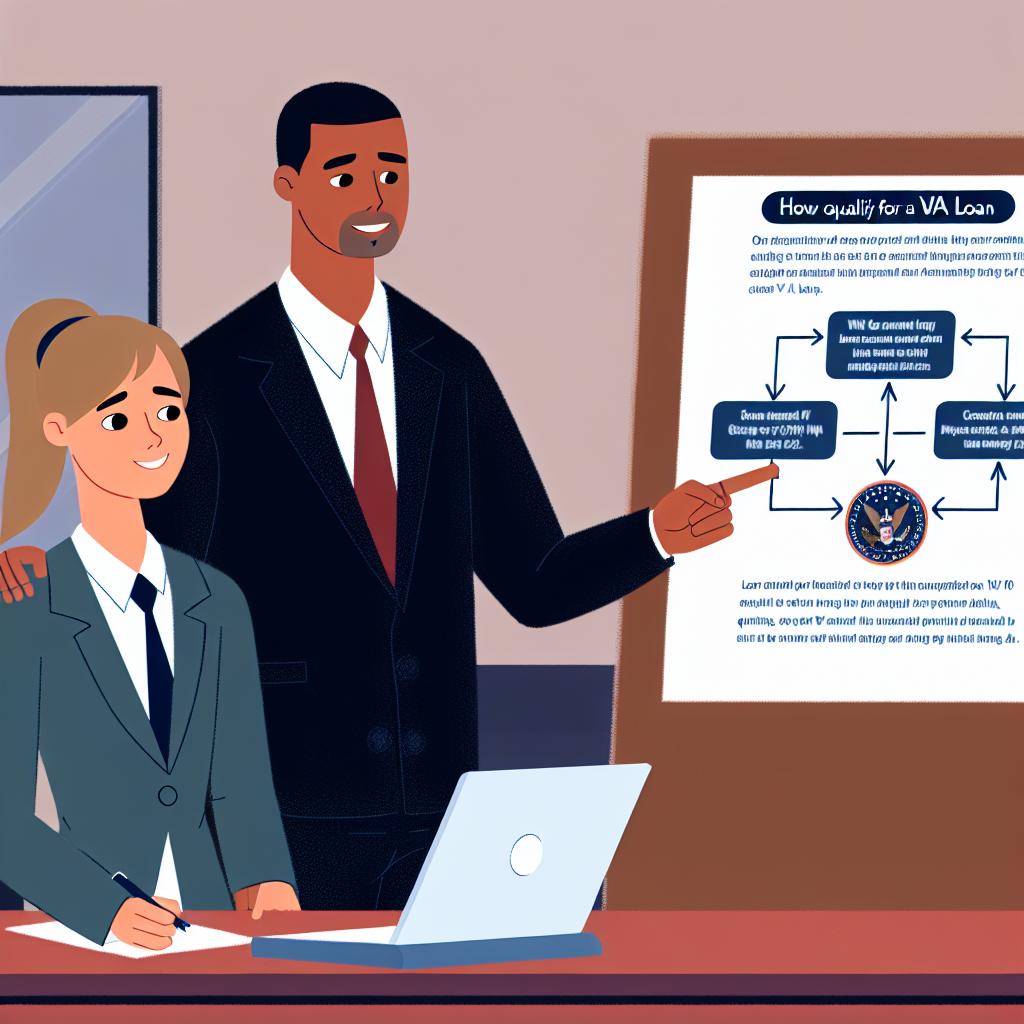
How to qualify for a VA loan.
Understanding VA Loan Eligibility
The Veterans Affairs (VA) loan program offers a valuable opportunity for veterans, active-duty service members, and certain members of the National Guard and Reserves to purchase homes. One of the standout features of this program is the ability to do so without the need for a down payment, which can significantly reduce the financial barriers to homeownership. In this expanded discussion, we will delve into the essential requirements and sequential steps necessary to qualify for a VA loan.
Service Requirements
Qualifying for a VA loan begins with meeting specific service-related criteria, which vary depending on your service branch and status:
Active Duty Service Members: For those currently serving, a minimum of 90 continuous days of active duty service is typically required to be eligible for a VA loan. This provision aims to ensure that current service members who have dedicated their time and efforts to their country have access to homeownership benefits.
Veterans: Veterans seeking to qualify for a VA loan must meet certain active-duty service criteria. These generally include at least 90 days of service during wartime or a minimum of 181 continuous days during peacetime. These requirements reflect the level of commitment and service veterans have provided, recognizing their sacrifices with a housing benefit that can ease the transition to civilian life.
National Guard and Reserves: Members of the National Guard and Reserves typically need to have completed six years of service to be eligible for a VA loan. However, if they are called to active duty, their requirement aligns with that of regular active-duty members, which means they may only need to complete 90 continuous days of active duty service. This flexibility acknowledges the diverse roles and commitments these members undertake.
For a comprehensive understanding of these service requirements and to verify personal eligibility, potential applicants can consult the VA’s eligibility page. Here, detailed information and guidance are provided to assist in navigating the eligibility landscape.
Certificate of Eligibility (COE)
Securing a Certificate of Eligibility (COE) is a necessary step in the VA loan qualification process. The COE serves as formal evidence of a borrower’s eligibility for a VA-backed loan and can be acquired through several convenient methods:
Online Application: The most straightforward and efficient way for eligible veterans and service members to obtain a COE is through an online application using the VA’s eBenefits portal. This platform streamlines the process, allowing users to swiftly navigate through the necessary steps.
Lender Support: VA-approved lenders are often a valuable resource in obtaining a COE. Many lenders facilitate the process as part of their loan service offerings, saving applicants time and reducing potential confusion.
Mail Application: For those preferring traditional methods, a COE can also be obtained by completing VA Form 26-1880. Applicants would then need to mail this form to the designated VA office. Although slower, this method serves those who may not have ready internet access or prefer handling applications by mail.
Meeting Financial Requirements
While the VA loan program is known for its lenient approach to financial qualifications, there are still key criteria that applicants must meet:
Most lenders participating in the VA loan program typically require a minimum credit score of around 620, although this number may vary. This reflects an evaluation of the applicant’s creditworthiness, with lenders assessing the likelihood of timely mortgage repayments.
Additionally, borrowers need to demonstrate a steady and sufficient income capable of covering mortgage payments, household living expenses, and other personal financial commitments. Lenders usually assess income stability through employment records, pay stubs, or tax returns.
Occupancy Requirements
A crucial stipulation of a VA loan is that the property purchased must be primarily used as the borrower’s primary residence. The VA mandates that the homeowner generally occupies the property within a reasonable time frame—typically within 60 days post-closing. Exceptions and extensions can be considered under particular circumstances, providing flexibility for unique situations such as deployment or a distant job location.
Resolving Financial Issues
Addressing any prior financial difficulties is essential before pursuing a VA loan. Any history of bankruptcies or foreclosures must be resolved to ensure eligibility. Typically, the VA requires a waiting period following such financial events, generally around two years, although this may vary depending on specific circumstances.
Meeting all these requirements can position service members and veterans to successfully qualify for a VA loan, thereby accessing its numerous benefits such as zero down payment and competitive interest rates. For further insights or assistance in the application process, reaching out to a VA-approved lender or visiting the official VA website can provide additional support and clarification.
